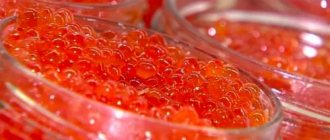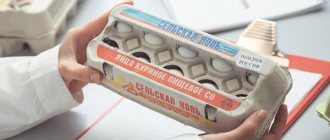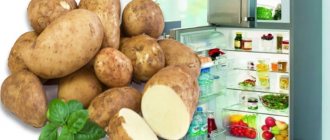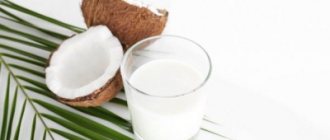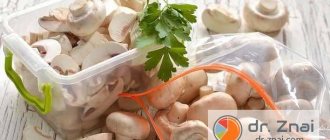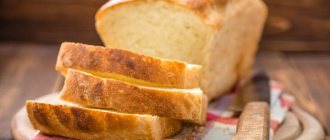Honey is a natural product that not only improves health, but also promotes speedy recovery from many diseases. When exposed to high temperatures, its structure changes - beneficial substances begin to break down, which leads to a partial loss of beneficial properties. To prevent this from happening, it is recommended to store honey in the refrigerator or in a cool place. What rules for storing the product to preserve its beneficial properties must be followed further in the article.
Impact of low temperatures on honey
Basically, the product is kept at home in a dark, cool room - a closet (pantry) or in the refrigerator. To understand the effect of low temperatures on honey, you need to analyze the conditions in which it is in the hive during the winter. Before the cold weather, bees begin to insulate themselves with propolis and bee bread; these insects live in large swarms, which allows them to maintain above-zero temperatures inside the hives. This prevents changes to the product structure.
At low temperatures, honey begins to freeze and the process of its crystallization accelerates - this leads to the loss of many enzymes. In addition to the above, it becomes difficult to remove the product from a can when cooled.
Attention! When the jar is dipped into hot water to heat and liquefy the product, honey loses even more beneficial enzymes, which is why it is not recommended to put it even in hot tea.
The best option is to store honey not in a too cold area of the refrigerator, but keep it at room temperature in small jars. Small containers ensure that the product does not become sugared longer. When the product is completely natural, it is permissible to keep it in the refrigerator, but the temperature should not be less than 6̊ C. In this case, the product must be contained in a tightly closed jar or food container made of the following materials:
- tree;
- glass;
- plastic;
- ceramics.
When the refrigerator has a dry freezing function, then tightness is not a mandatory, but desirable criterion. It is not recommended to keep honey on the same shelf with any strong-smelling food products - smoked fish, onions, horseradish and the like. In addition to the above, the product loves the dark and this makes the refrigerator one of the best storage options.
Treatment of SARS-CoV-2 infection and bee venom
Severe acute respiratory syndrome coronavirus (SARS-CoV-2) is the causative agent of coronavirus disease 2022 (COVID-19), a respiratory infection that was first detected in Wuhan province in China in late 2022 and became a global pandemic in 2020. COVID-19 poses enormous public health challenges, including a large number of asymptomatic cases. Scientists are looking for various ways to combat the infection. The scientific review “Bee venom and SARS-CoV-2”, published by the scientific publishing house Elsevier, is devoted to the ability of domestic bee venom to resist the epidemic.
Course of the COVID-19 disease
Severe SARS-CoV-2 infections are characterized by cytokine storm syndrome, hyperinflammation, and multiple organ failure. Host cells are infected through the angiotensin-converting enzyme 2 (ACE-2) receptor, which is associated with both innate and acquired immunity. ACE2 is thought to enhance viral replication and host cell invasion and is a major component of the renin-angiotensin-aldosterone system (RAAS), interacting with cardiovascular enzymes to trigger a cascade of cardiovascular disease. ACE2 may be the reason why patients with SARS-CoV-2 require pharmacological thrombosis prophylaxis. The pathogenesis of SARS-CoV-2 involves viral binding to epithelial cells and local spread with minimal innate immune response.
The second stage of infection is characterized by increased spread of the virus, an active immune response, spread of the virus to the lower respiratory tract and may include the cardiovascular and digestive systems.
The third stage involves hypoxia, infiltration of the entire respiratory system, and finally acute respiratory distress syndrome (ARDS), which is potentially fatal. SARS-CoV-2 is associated with coagulopathies, thrombotic events, and lymphocyte depletion.
Coronavirus treatment protocols
There is currently no generally accepted alternative treatment protocol for SARS-CoV-2, although the administration of polyclonal antibodies shows some promise. The effectiveness of chloroquine and its derivatives in preventing COVID-19 is ongoing, as is famotidine, an antiulcer drug given in high doses for 14 days to control SARS-CoV-2 infection. Remdesivir, which was previously used to treat Middle East respiratory syndrome-Coronavirus (MERS-CoV), has been investigated as a drug candidate against SARS-CoV-2. Lopinavir/ritonavir combinations, commonly used to prevent HIV/AIDS, are also being studied for effectiveness against SARS-CoV-2.
Using poison as medicine
Neutrophil extracellular traps (NETs), common in snakes, insects, arachnids, and centipedes, have also been considered for SARS-CoV-2. Bee venom may act as ACE2 inhibitors or angiotensin receptor blockers (ARBs), although research on bee venom and SARS-CoV-2 is sparse. Snake venom is known to act through phospholipase A2 (PLA2) to produce arachidonic acid, which causes hypotension. In humans, Hymenoptera venom reduces key parameters of the RAAS. The combination of bee venom and propolis has been associated with hypotension in laboratory animals due to decreased serum angiotensin levels, demonstrating a close relationship between bee venom and the ACE2 pathway.
Why does it turn white in the refrigerator?
Crystallized honey, as well as honey poured into containers, can form a whitish layer in the upper part on the surface or near the walls. This phenomenon is called “blooming” of honey. It is more often observed in the case of a product with low humidity. The reason for blooming is that during crystallization a maximum number of small voids appeared, which cannot always be filled with intercrystalline liquid. After air enters them, the surface honey layer turns white.
Reference! Honey is more likely to turn white when stored in areas with very low humidity.
The product is also capable of blooming if it has been exposed to rapid temperature changes or is stored at a temperature below 4̊ C. This is due to the fact that during the process of volumetric reduction of the product, air penetrates into the resulting voids.
Since the formation of a whitish layer on the surface of honey can occur subject to storage standards and slightly reduced humidity in the room, this phenomenon can be regarded as a sign of product quality. However, the misconception that this whitish layer is crystallized sugar is somewhat misleading.
Anti-inflammatory potential of bee venom
Low doses of bee venom produce a range of anti-inflammatory responses that have been studied in diabetes, rheumatoid arthritis (RA), heart disease, obesity, asthma, skin diseases and diseases associated with the central nervous system (Alzheimer's disease, Parkinson's disease, etc.) sclerosis). Bee venom suppresses inflammatory cytokines, including interleukin-6 (IL-6), IL-8, interferon-γ (IFN-γ), and tumor necrosis factor-α (TNF-α). Reductions in signaling pathways responsible for the activation of inflammatory cytokines, nuclear factor-kappa B (NF-κB), extracellular signal-regulated kinases (ERK1/2), protein kinase Akt, and human Porphyromonas gingivalis lipopolysaccharide (PgLPS) keratinocytes are associated with melittin treatment (65 ) (Fig. 2).
Shelf life of honey in the refrigerator
It is not possible to indicate the exact period during which honey at home can be kept in the refrigerator without affecting its quality. This is due to the fact that the exact period of time a product retains its original properties is determined by the following factors:
- humidity indicator;
- type of honey;
- temperature conditions.
There are several rules, if followed, it is possible to extend the shelf life and preserve the maximum beneficial properties of honey. Basic recommendations, if followed, the product can be well stored in the refrigerator for a long time:
- Temperature changes negatively affect the quality, so it is not advisable to frequently remove the jar from the refrigerator.
- When a significant volume of product is stored, it is necessary to pour it into small containers, which will not only avoid taking out the main volume from the refrigerator each time, but also keep it in a liquid state longer.
- It is recommended to keep honey in tightly closed jars or other containers - this will preserve the taste characteristics and prevent the product from absorbing foreign flavors and odors.
Following these recommendations allows you to extend the storage period and at the same time help preserve viscosity, preventing the premature appearance of a white layer on the surface. Following these rules does not allow honey to lose its beneficial properties.
How to keep honey liquid
It is correct to keep honey in a wooden tub or in a ceramic vessel sealed with a wax stopper. This way it won't thicken longer. But you shouldn’t let the product completely liquefy. Moderately liquid honey should flow from the spoon in a thin column, even if the spoon is turned over.
Although the process of crystallization of honey is inevitable and inevitable, there are chances to keep it liquid for at least five to six months. Under no circumstances should the product be kept at zero or even minus temperatures - otherwise it will quickly thicken. The optimal storage temperature for honey is plus 10 degrees Celsius.
Consequences and possibility of freezing
It is acceptable to put honey in the freezer, but sub-zero temperatures will negatively affect the healing properties of the product. If you want to freeze natural honey, you need to package it into small portions; for this you can use ice molds, small resealable glass containers or miniature food containers.
Attention! When frozen, the product hardens, so you cannot send it to the freezer in a bottle or other container from which honey will later be difficult to remove.
If you want to put honey in the freezer, you need to take into account that the maximum number of times this product can be frozen is once. A repeated procedure will lead to the complete destruction of all vitamins in frozen honey. At sub-zero temperatures, the product is able to retain almost all of its own characteristics for a long time, but honey loses some of its beneficial properties irrevocably. To warm it up correctly and without consequences, you need to lower a closed glass jar or plastic food container into warm water, the temperature of which does not exceed 40 °C. Higher temperatures destroy the beneficial substances in honey.
Optimal storage temperature
Many are convinced that honey is an ideal natural preservative that cannot spoil. However, this is a misconception. The product does contain enzymes that prevent the active reproduction and development of bacteria, but incorrect storage conditions can significantly reduce its shelf life.
To prevent spoilage, it is necessary to maintain the temperature within +6...+20̊ C. A higher temperature will lead to the destruction of beneficial substances due to the acceleration of the fermentation process, and a low temperature will lead to a loss of viscosity and a change in the taste of the product. Having selected the temperature regime for storage, it is necessary to avoid its changes, and even more so, sudden changes.
The potential of bee venom against coronavirus
The development of adjuvant therapies (using APi M and PLA2) for use against SARS-CoV-2 infections offers a unique approach to viral therapy. The development of a DC-based bee venom vaccine using APi M and bvPLA2 opens new opportunities for additional medical interventions against SARS-CoV-2 infections. Research examining cellular signaling between the bee venom proteins Janus kinase (JAK) and activator of transcription (JAK-STAT) will help strengthen its use in complementary medicine against SARS-CoV-2. JAK inhibitors are associated with improved prognosis in patients with COVID-19, but studies are needed to elucidate the cellular mechanisms. Synergistic activity through combinations in alternative and complementary medicine will help combat side effects associated with current monotherapies for treating SARS-CoV-2 infections. SARS-CoV-2 is a new virus, and new treatments may be needed to support treatment over time, which may be important for supporting the immune response in patients suffering from so-called long COVID.
Read more
How to store honey
The average temperature in the refrigerator compartment is in the range of +2...+6̊ C, and the places on the door are considered warmer - it is on them that it is recommended to place containers with honey. When the product is in the honeycombs, you need to position them correctly. Since the frames usually have large parameters, they will not fit into the jar so easily. To place them in the refrigerator, you need to cut the honeycombs into pieces that will easily fit through the neck of the container. The container in which the product is placed must be closed with a lid and only then stored in the refrigerator.
Advice! It is better to use the honey that leaks out of the honeycombs during cutting as soon as possible.
Since it is quite difficult to buy honeycombs filled with honey, as well as to extract the product from them, most often they take it in liquid form. There are several traditional options for storage containers.
Glass jars
The most commonly used utensils when packaging a product. Glass jars are recognized as the most convenient option, since it is easy to choose a lid for them that will fit tightly enough on the neck. The shelf life in glass containers is long – up to 2 years.
Wooden utensils
Must be made from hardwood. Optimal options:
- birch;
- Linden;
- alder.
A good option when honey is given as a gift, and such barrels also add a certain atmosphere of comfort to the apartment due to their original appearance. The shelf life in such containers is short - approximately 3-9 months, depending on the tightness of the lid.
Clay jugs and pots
Not the most convenient container format for storing product. But the appearance of such containers is quite interesting and original - just like wooden barrels, such elements create a certain atmosphere in the house. The biggest disadvantage of such dishes is that it is difficult to find a tight lid.
Plastic food containers
It is permissible to keep honey in food boxes, but it is required that they be made of thick, high-quality food-grade plastic. It is also necessary to have a tightly closing lid on such a plastic container, otherwise the honey will not be able to stand for a long time and will spoil in a few weeks. You can keep it in plastic for no longer than 1 year.
Other storage options
It is acceptable to store honey in enameled metal containers or containers made of stainless steel. Nevertheless, it is impossible to name the exact period for which the product can remain in such a container without changing its taste and properties - any scratch or chip will lead to the fact that the honey will begin to take on the smell and taste of metal.
Attention! Ordinary metal utensils, including those made of galvanized steel, are absolutely not suitable for storage, since honey will begin to react with the material, oxidizing it and absorbing harmful compounds.
If you follow the technology, the healing properties of the natural product remain the same for up to 1 year. Next, the slow degradation of phytoncides and vitamins begins, which turns honey into ordinary sweetness without beneficial properties. This product is suitable for consumption for about 5-10 years.
To preserve its beneficial properties, it is necessary to follow the recommended storage mode, when the temperature does not exceed 20 C, but also not lower than +6 C. Honey does not tolerate temperature changes and reacts negatively to direct exposure to sunlight. To ensure that honey retains its original liquid for a long time, it is recommended to store it in a small container made of glass, plastic, wood or ceramic with a tight-fitting lid. The beneficial properties of the product remain unchanged for 1 year, then for another 5-10 years it is suitable for food, but only as an ordinary sweet.
Video: important rules for storing honey
HOW TO STORE HONEY? 4 IMPORTANT RULES FOR STORING HONEY!
Watch this video on YouTube
Video: how to store honey - beekeeper's advice
HOW TO STORE HONEY? A BEEKEEPER'S TIPS ON HOW TO STORE HONEY CORRECTLY!
Watch this video on YouTube
Do you want to understand better than others?
- How long can butter be stored in the freezer and refrigerator? — Butter is a basic product that is used virtually everywhere in cooking; rarely can a dish be prepared without it. At the same time, this oil is beneficial...
- Is it possible to keep garlic in the refrigerator: 10 ways to store vegetables - Garlic is a crop characterized by a high degree of lightness. However, for its long-term storage it is necessary to create certain conditions: suitable temperature and humidity,…
- Preparing and storing ginger in the refrigerator - Ginger root is a spice characterized by unique taste and medicinal qualities. It is used to create meat dishes, desserts, prepare cold tea or...
- Top 5 ways to freeze fresh basil for the winter - Basil greens are an aromatic, healthy and tasty spice that is often used in cooking, as an addition to sauces, meat and fish dishes, soups and side dishes. To…
- How to freeze peaches for the winter: 8 best ways - Freezing will help you preserve a delicious piece of summer. Find out how to choose the right fruits for vitamin preparations, whether they can be stored in the refrigerator, what ways there are to...

